As shared on our X account, @FIPVOTENOLA in 24 tweets, here are key data points that counter the recurring “soft on crime” narrative and highlight the consequences of proposed legislation.
HB 1: Over 55,000 charges were dismissed, among people with public defenders in 2023. Under HB1, these arrests are publicized and freely scraped off the internet.
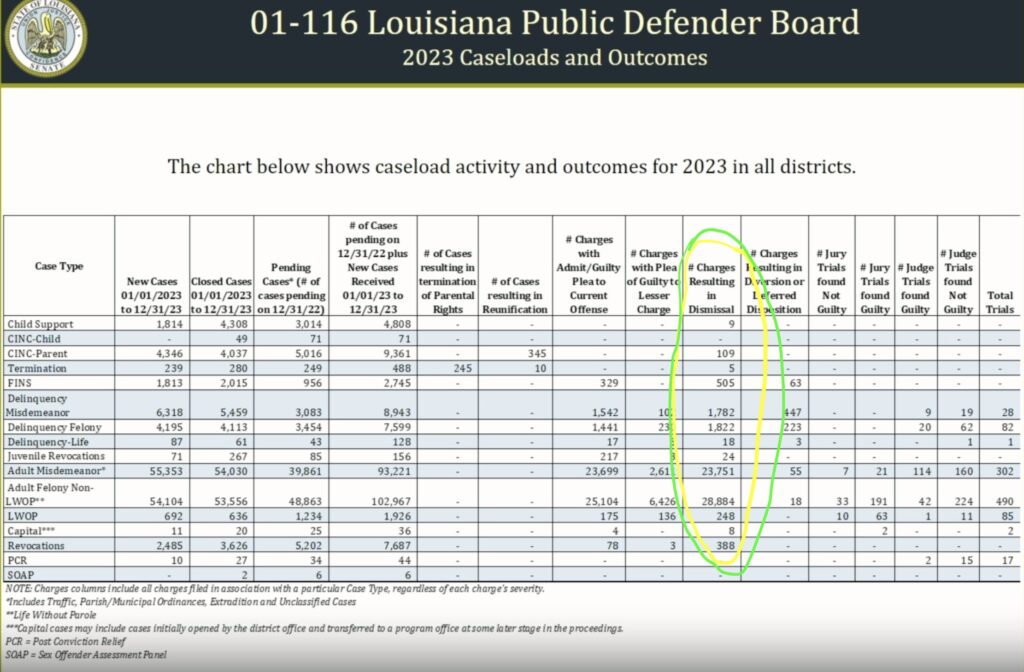
SB 8: Indigent defense currently gets 32% of its revenue from “Conviction and User” fees, creating a conflict of interest for lawyers getting paid when a client is found guilty, rather than innocent. Under SB 8, Gov. Landry will appoint the state Public Defender.
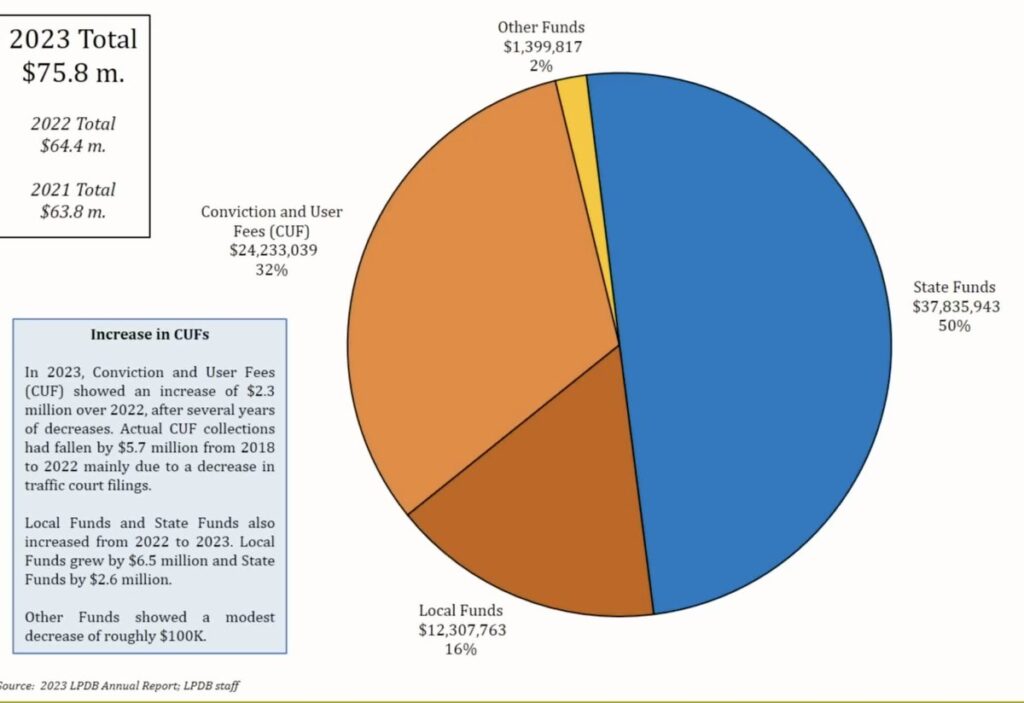
JRI: The 2017 Justice Reinvestment Initiative (JRI) impacted only non-violent offenses, and in the years since, people in prison have declined for all categories. Keep in mind that JRI programs did not begin until savings were converted into program and impact a few years later.
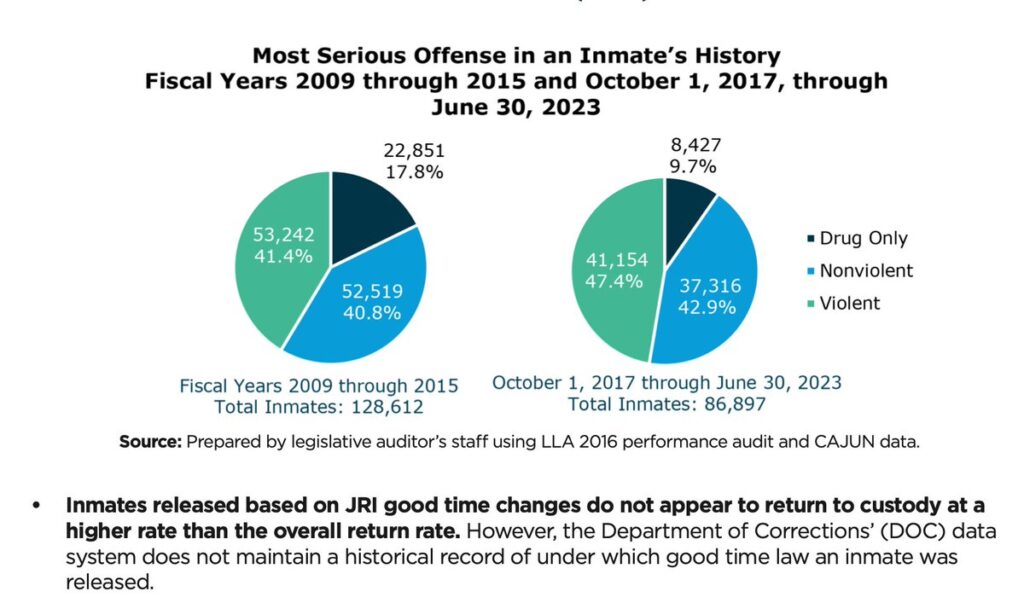
With reduction in people incarcerated, fewer people were sent into local jails (where over half of state prisoners serve). This resulted in significant lost revenue for sheriffs, which JRI stood to replace by funding local programs to help lower-level (and nonviolent) convictions
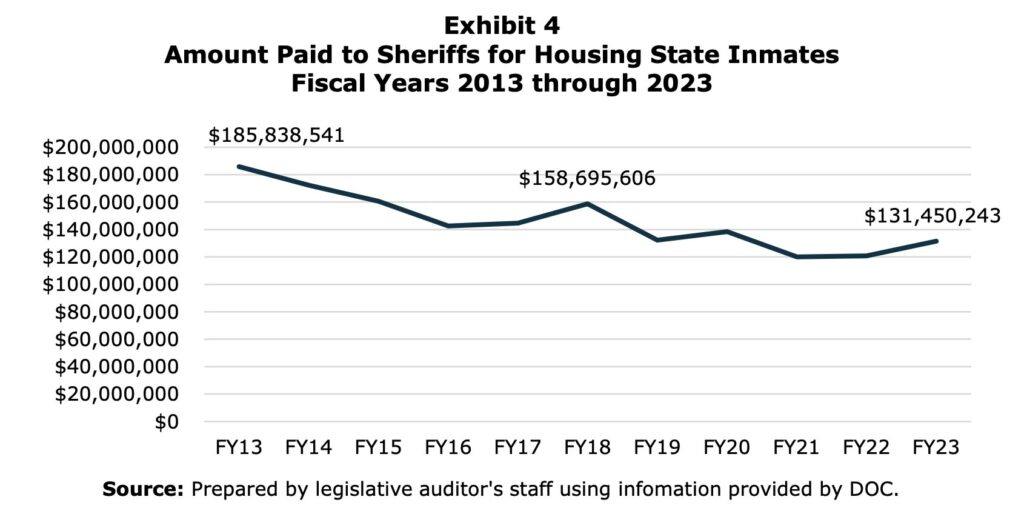
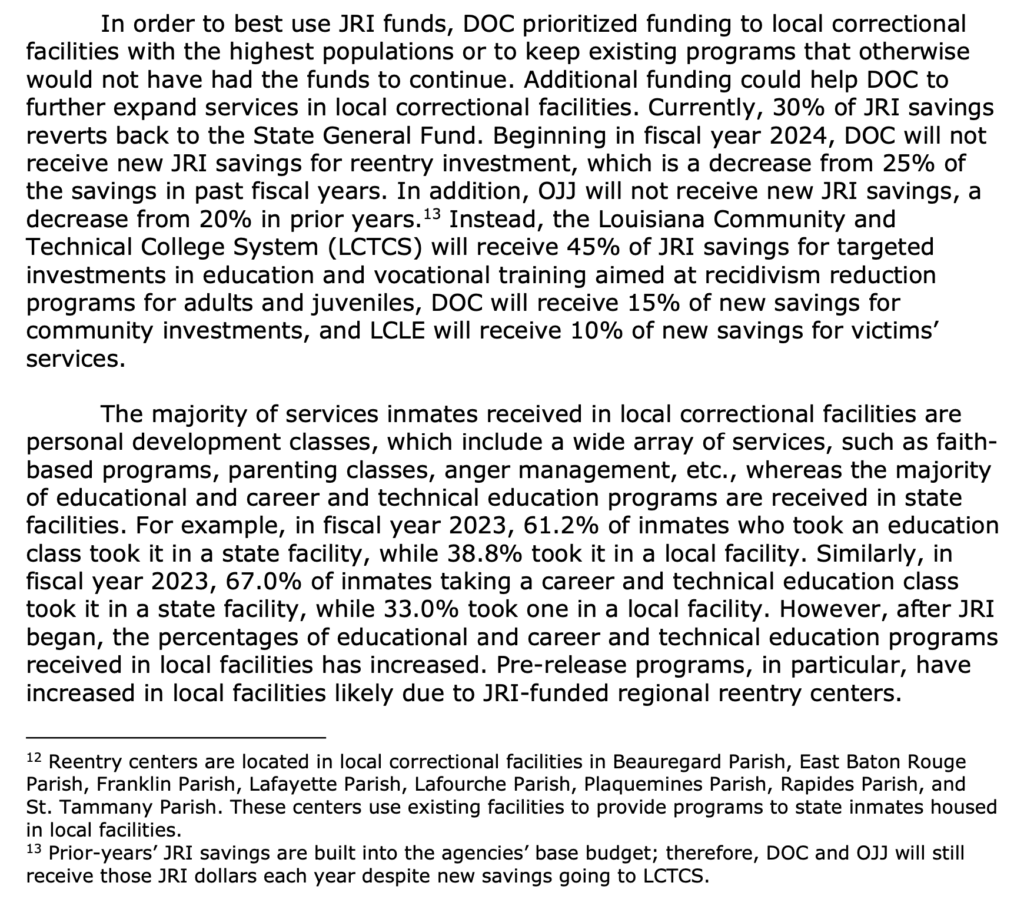
Despite added funding, jails do not offer nearly as many programs as state prison. JRI has had massive impact to increase that, but “savings” (JRI dollars) are expiring without reductions to incarceration. All progress is soon to be abandoned without a fiscal allocation.
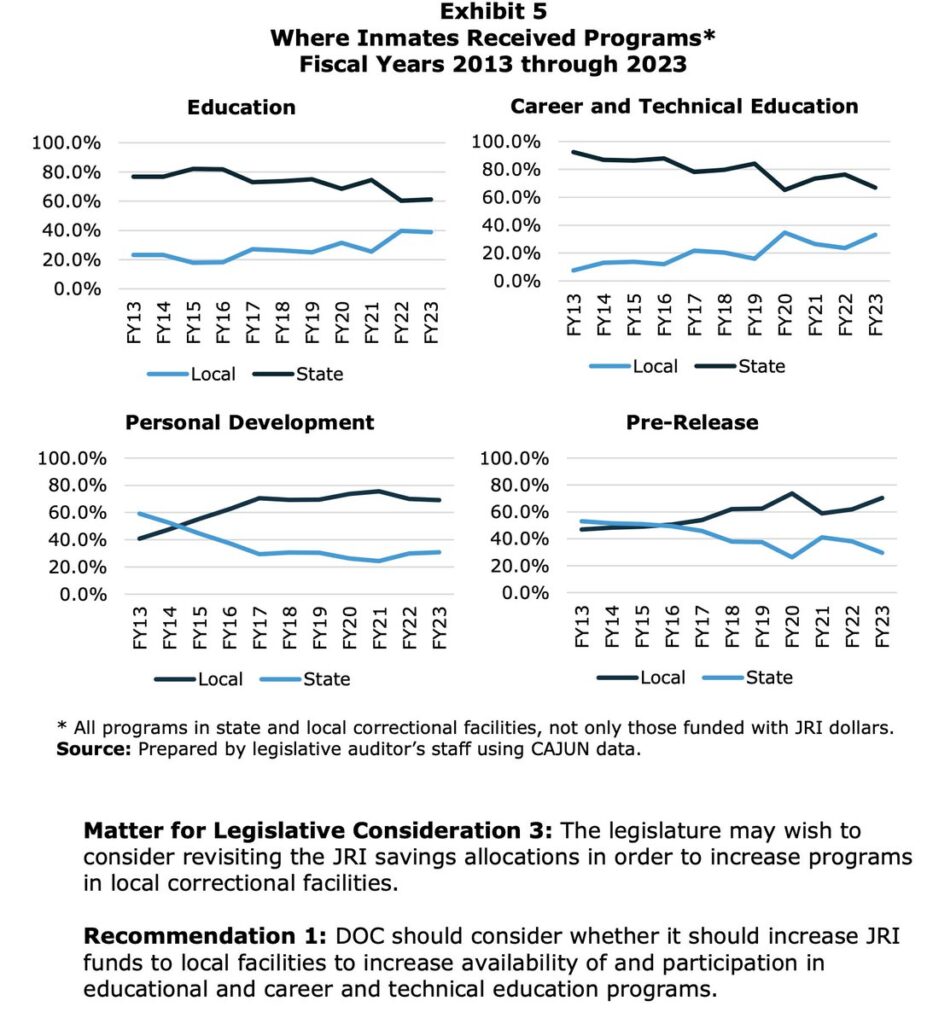
None of the #CrimeSession bills provide any programming, nor fund prevention, rehabilitation, or reentry. However, the incarceration costs will soar at least $60 – $100m annually under the Governor’s package of bills. None of which acknowledges the Angola medical litigation.
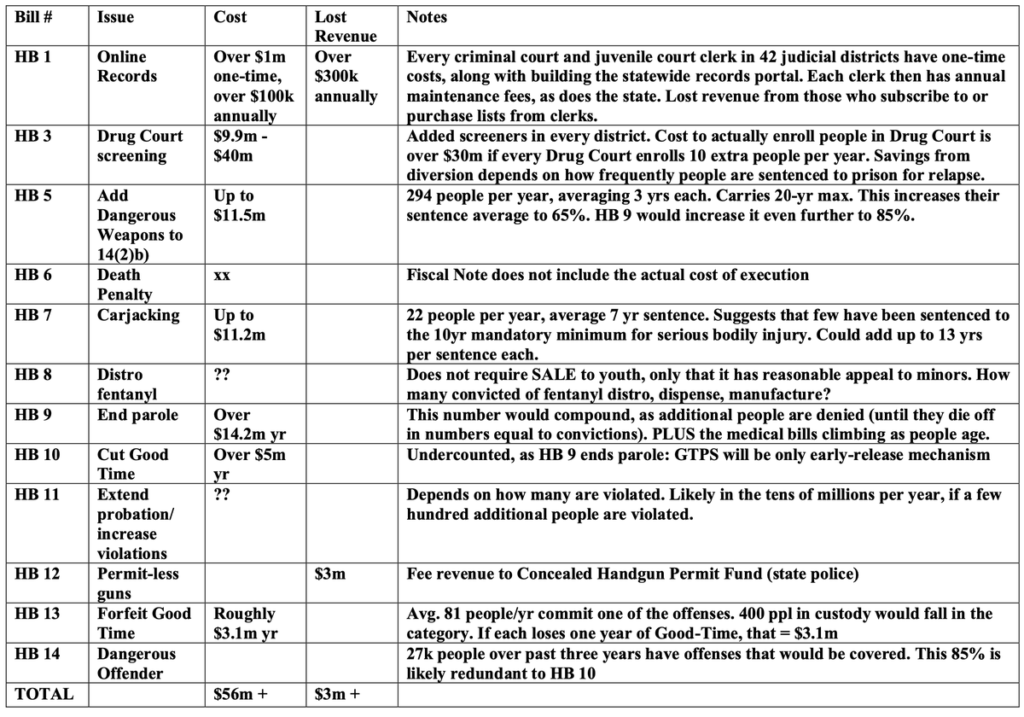
Some legislators, rather than accept facts on recidivism going down (comparing apples to apples over time) would like to redefine the word “recidivism” while failing to provide their oranges to oranges data over time.
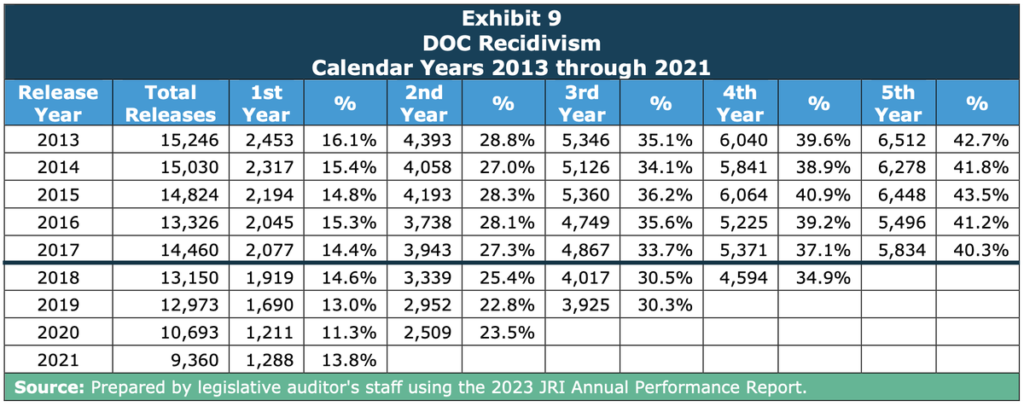
It is unclear which actual data visualization in reports by the Louisiana Legislative Auditor, the DOC, or Pelican Institute that people are not looking at, but the facts are facts.

Naturally, data sets can have imperfections (and we are all for better data), but that imperfection applies across the past 20 years. It can also be easy focus in on the less than 1% of cases that capture the public’s fury, as roughly 75% of crimes do not have a victim.
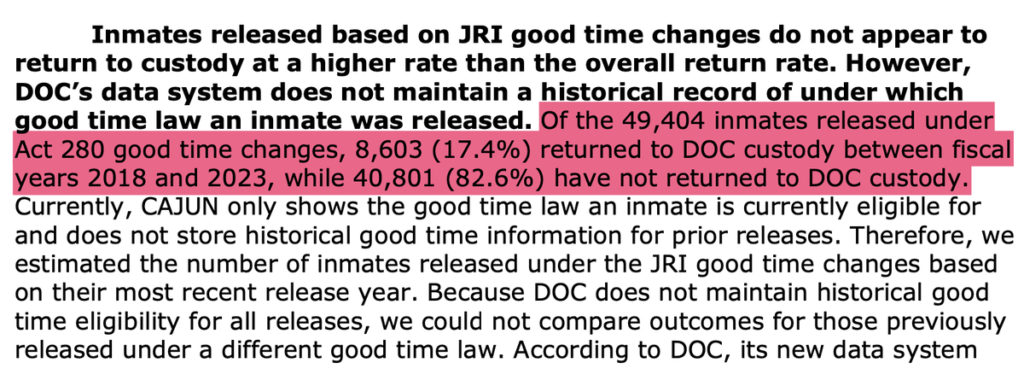
Keep in mind that the impact of reforms are typically a person being released a few months earlier than they would have. Someone serving 3 years on a nonviolent drug possession would be out on parole roughly 6 months earlier. Their success hinges on the supports, not the 6 months.
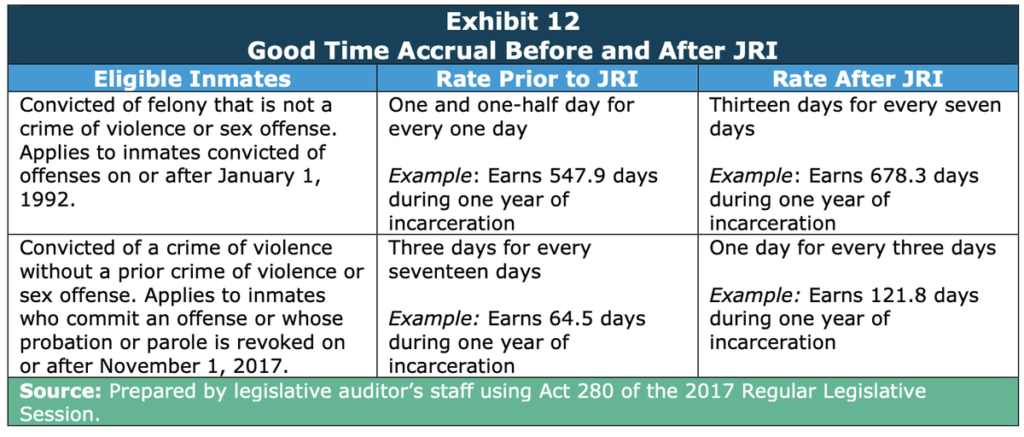
The clear #1 successful program is housing with an 89% success rate, even when over half of participants having a violent conviction. The Legislature can allocate funds here, and support Rep. Matt Willard’s bill to decrease discrimination for prospective tenants who are able to pay.
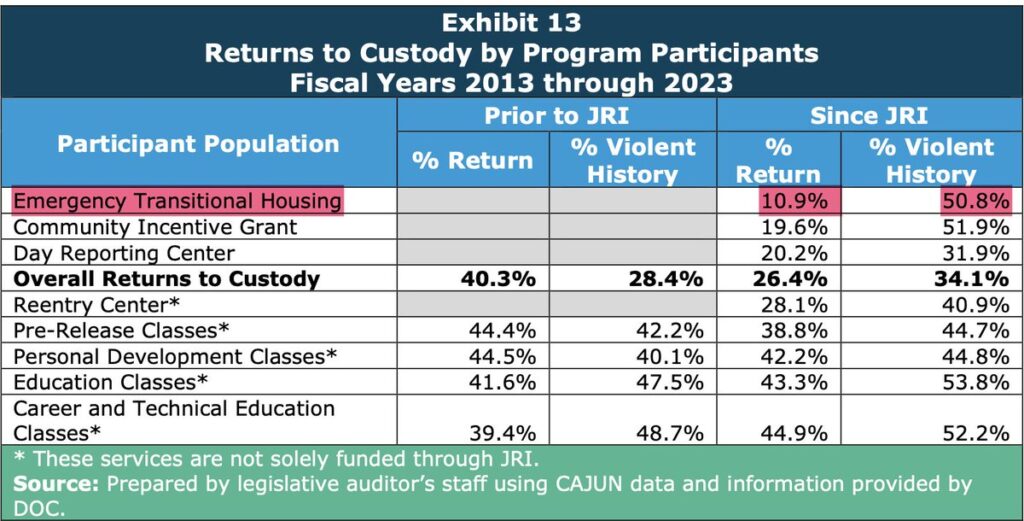
While programming has trended up under JRI, there is still hardly enough programs, practically zero substance abuse programming, and people serving the longer sentences will always be pushed back on waiting lists as others are closer to release.
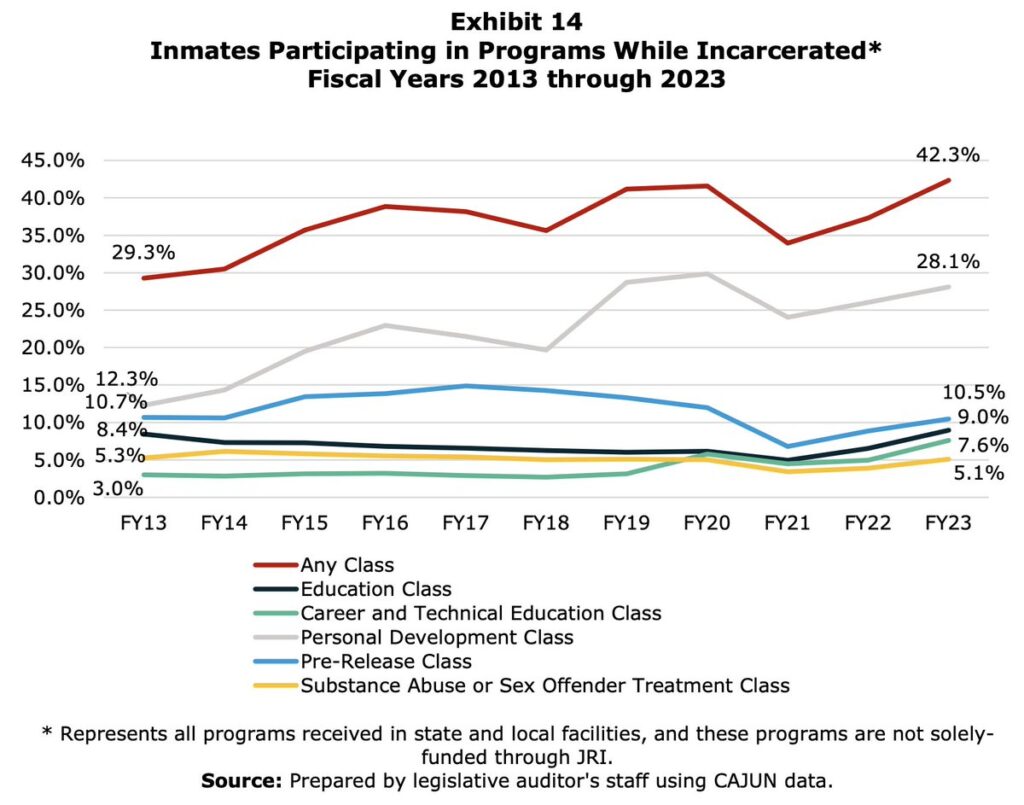
With the majority of people held in local jails, JRI hasn’t had enough time to develop programming throughout the system. This begs for Equal Protection litigation for those held in jails, as fewer programs = less rehabilitation, longer terms, and worse results.
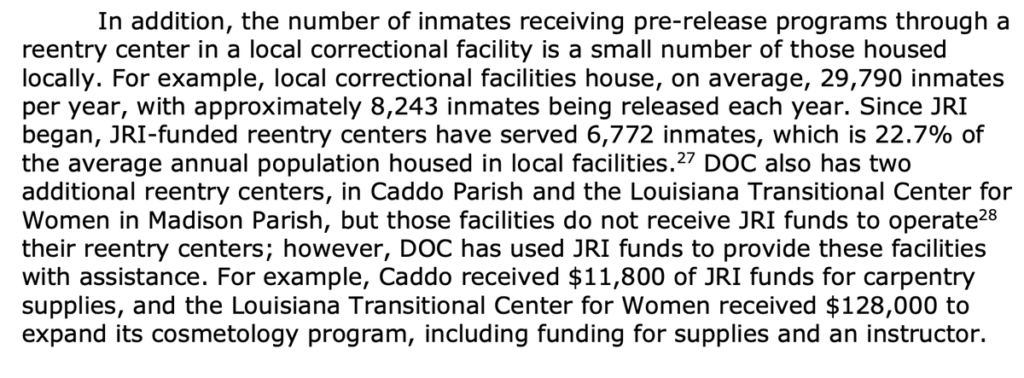
The primary programs under attack in the Governor’s push to “Stop Justice Reinvestment” will be the Reentry Programs, funded by JRI and run by sheriffs. It is unclear in this fast session if those programs will continue at all.
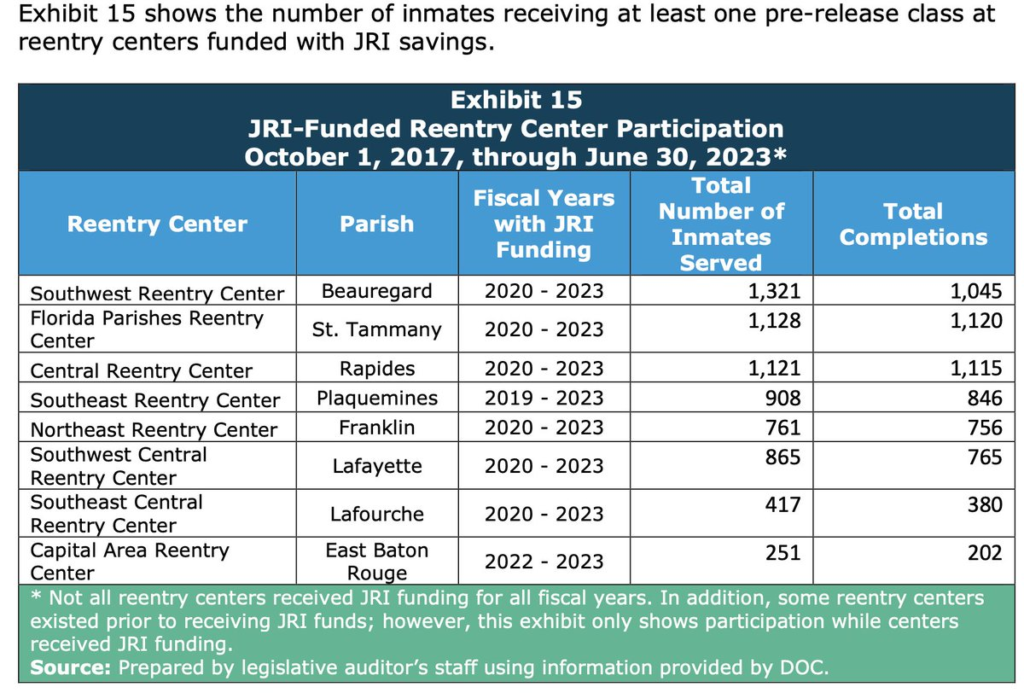
One reason for less recidivism is more supportive programs after release, even if only impacted a small portion of people. It should be no surprise that places such as New Orleans and Baton Rouge have lower recidivism rates because there is a broader and deeper network.
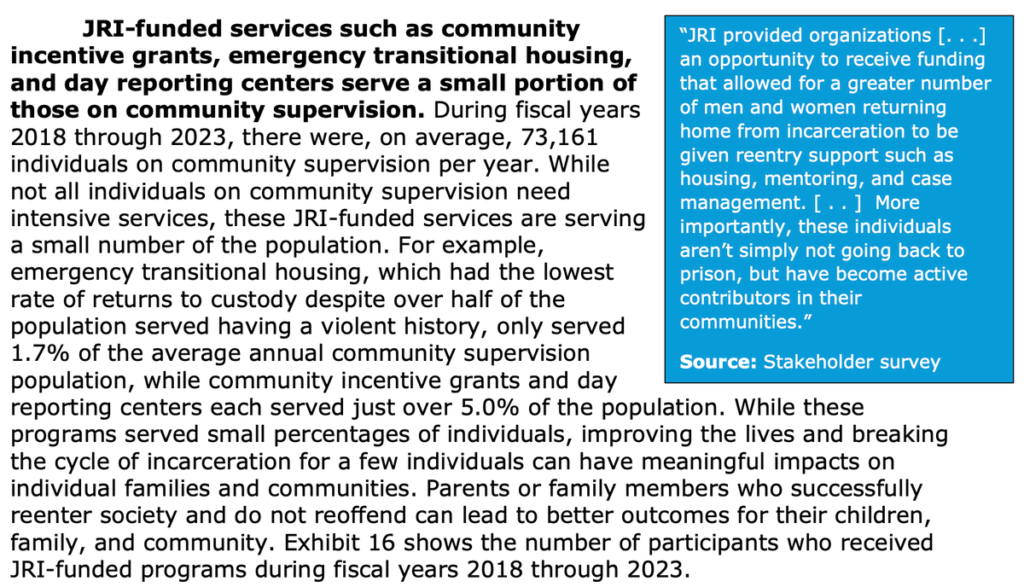
Despite seeing successes, the Crime Session does not invest in the things that decrease crime: Housing, jobs, mental health counseling, community health workers, opioid medication, substance use counseling, education, trauma care, restorative mediations, family reunifications…
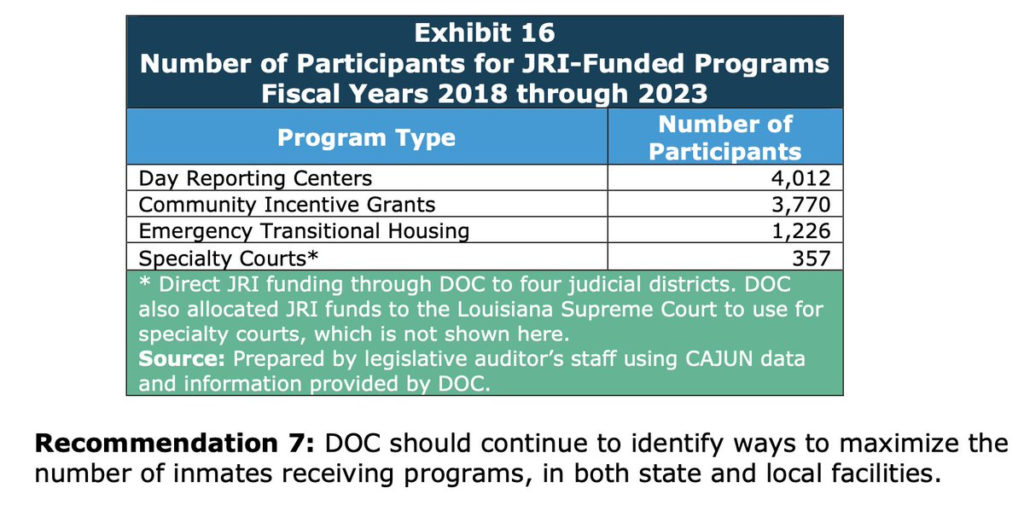
Of the relatively few people able to learn a trade in prison, nearly a quarter were able to find a job in that industry. 80% of them did not return to prison.
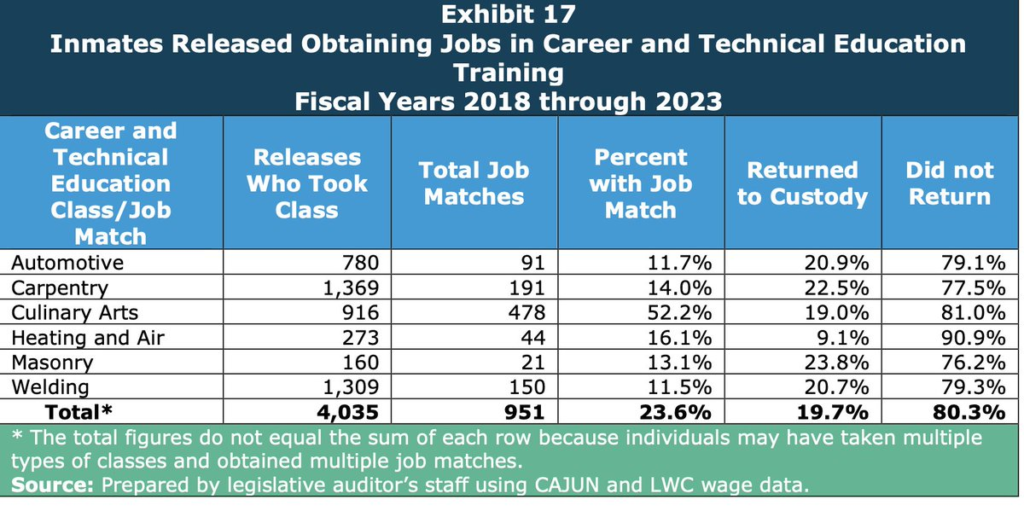
The cost of incarceration is $37k per year, which is 9x the median wages of people who returned to prison, and nearly 3x the wages of people able to assimilate into the community. With robots, self-checkout, AI and jobs being exported, Louisiana is using prisons for excess labor.
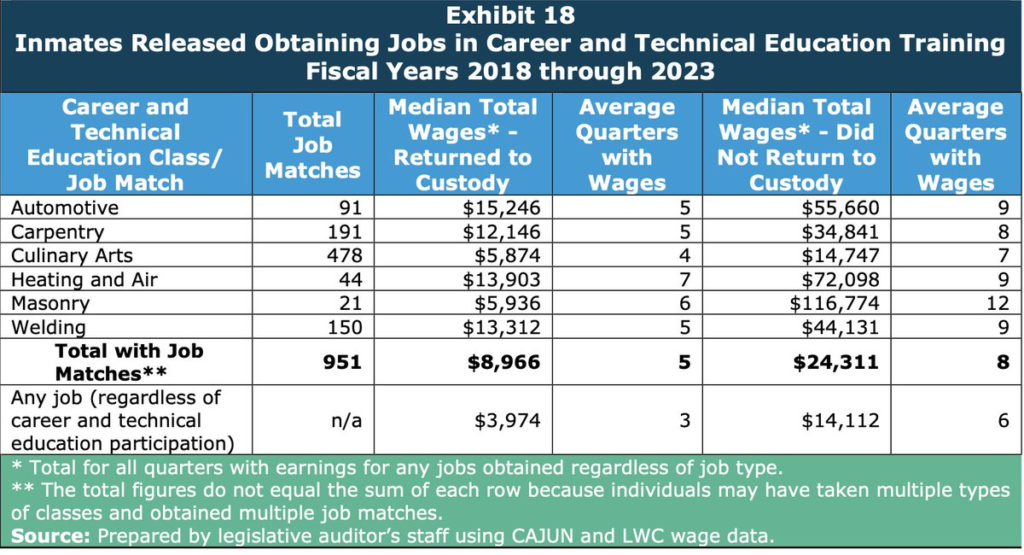
Meanwhile, JRI youth programs show stellar success. However, the Louisiana legislature appears determined to halt any progress.
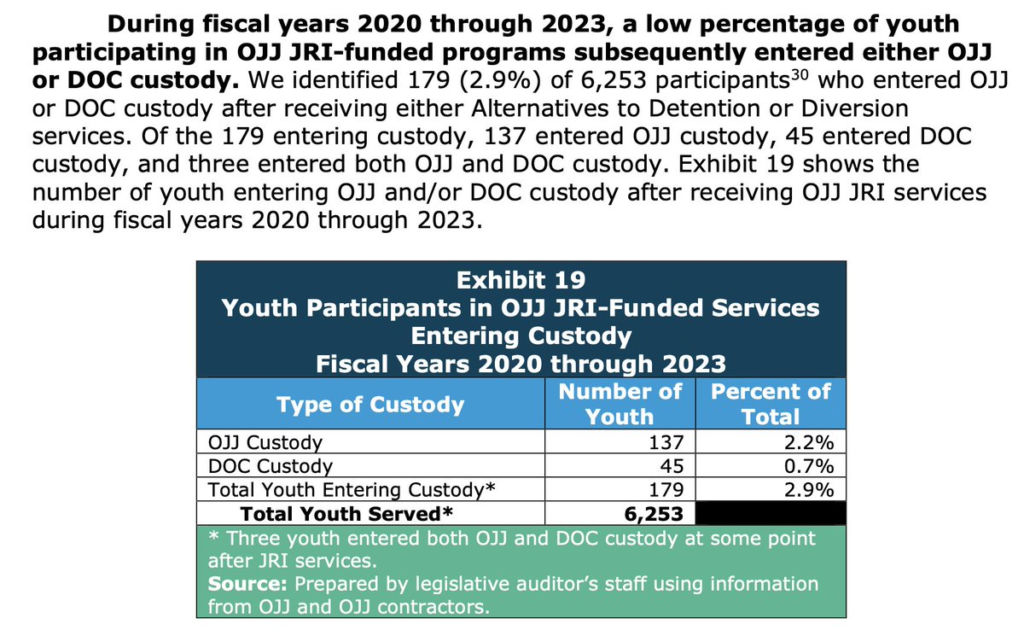
There are no glaring statistics about any specific age group. And with small numbers, a few successes or failures can seem like a major difference.
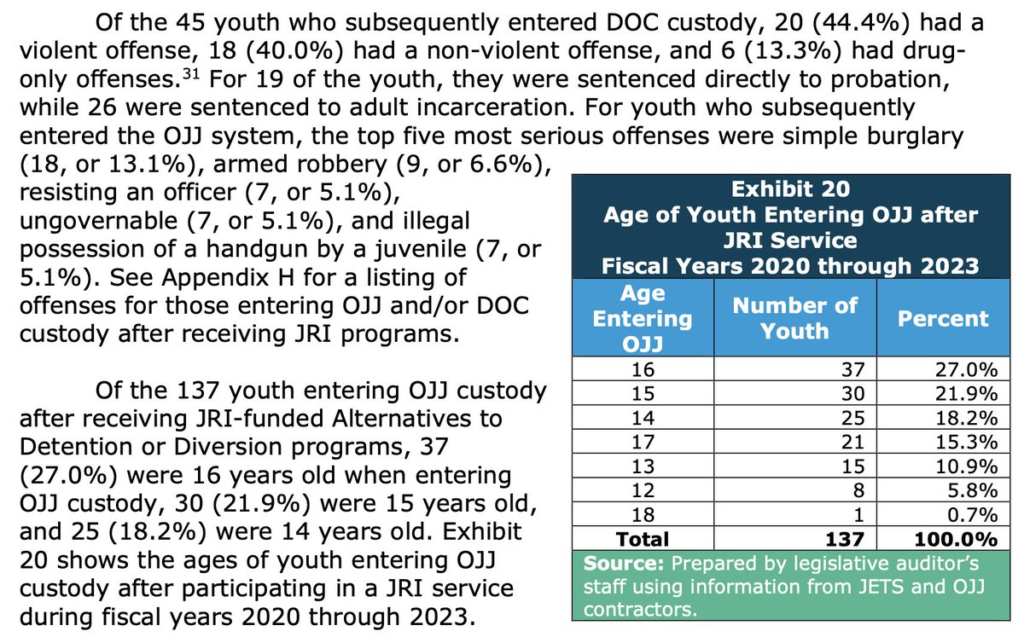
HB1: Despite juvenile crime going down, and 17 year olds being temporarily considered juveniles, the Crime Session will have impact kids who do not commit the most serious crimes, by publishing all arrests for violent crimes, and making petty offenses of 17 year olds “adult” crime.

It should concern everyone that the Crime Session is absent of actual data and lacks testimonies from the Legislative Auditor, DOC, judges, sheriffs, and other data analyst groups.
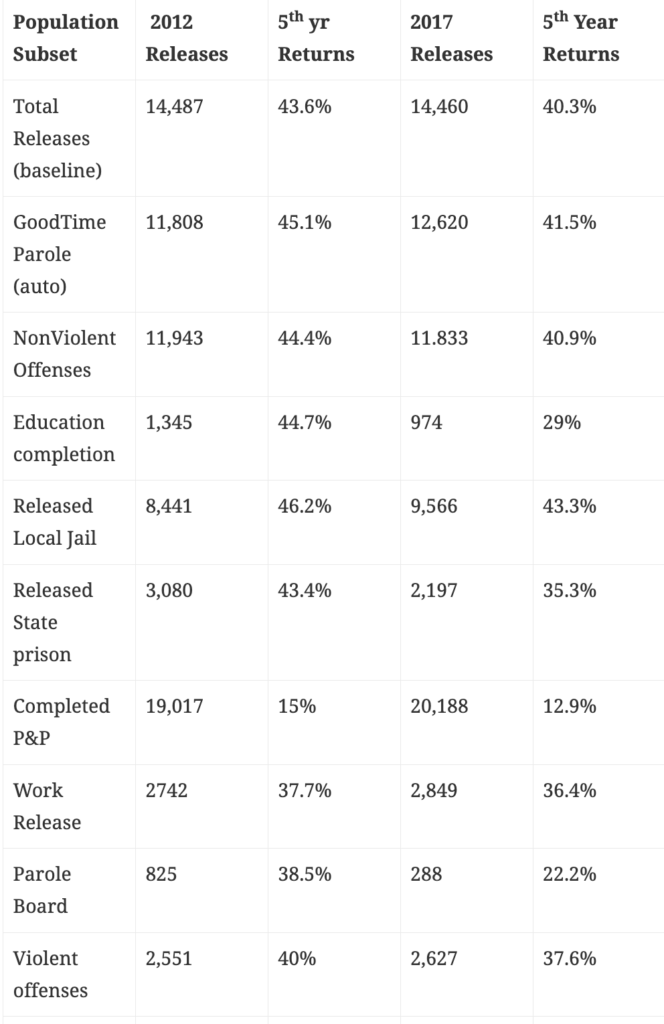
And even more concerning when the Violent Crime Task Force put out false narratives about people serving 15% of their time, on average; or people serving an average of 6 years on violent crimes [despite roughly 25% of people in Louisiana serving a sentence of Death in Prison].

Over 26% of Louisiana’s prison population (over half who are in sheriff’s jails) currently have over 10 years Time Served in prison. 10% of them have over 20 years in. Long sentences have increased, while short sentences decrease.


